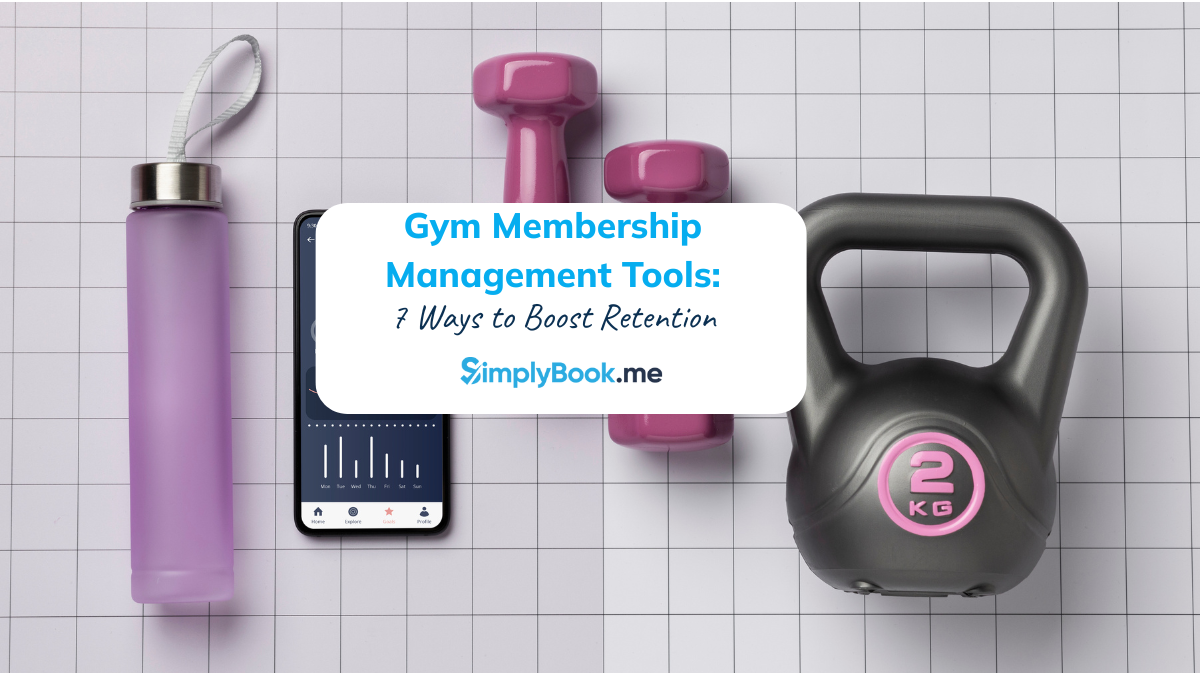How Retailers Can Leverage Social Media to Improve Customer Service

This post is also available in:
![]()
![]()
![]()
![]()
Those of us born before 1990 might remember having to call customer service on the phone. For most customers today, that’s the absolute last resort. It’s no wonder why: they can get a quicker response through live chat, direct messaging, and social media.
In fact, social media is fast becoming the most popular customer service channel. Done right, providing customer service on social media also has great benefits for retail businesses. And the setup is nothing you can’t organize with a few sticky notes or a Gantt chart in Google Sheets, for example.
Because social media feels open and authentic, customers believe they’ll get better service there than by email or over the phone. If you live up to that expectation, you’ll find customers are more loyal to your retail brand. And that’s just as true for brick-and-mortar stores as it is for online retailers.
However, many retailers are wary of the perceived risks of social media for customer service. What if customers leave negative comments or your brand voice doesn’t come across well? What if your company’s social media gets swamped with customer support requests?
This article will cover all these points and more. Thankfully, there are some trusted techniques you can follow to ace customer service on social media.
What You Need To Get Started With Social Customer Service
Like any addition to your business operations, you’ll have to plan carefully before starting with social media. Here are a few tips to help your strategy:
Find Your Customers
You can’t serve your customers if you don’t know which platforms they use. Twitter, Facebook, and LinkedIn are the obvious choices. Depending on your industry and target demographic, your customers might be using Instagram, YouTube, or TikTok as well. Identifying where they hang out online will help focus your customer service efforts.
Monitor Your Social Brand
It’s not practical to manually check what people are saying about your brand across multiple social platforms. That’s where automated monitoring tools come in handy. As well as flagging any mentions of your brand, you can also get an automated analysis of the sentiment in each mention. This is a great measure of how customers feel about your business.
Give Your Team Social Skills
While most of us use social media, that doesn’t make us social pros. A little training will go a long way in optimizing how your staff serves customers on social platforms. This includes technical training in how the software works as well as defining the guidelines for your social interactions. With these guidelines in place, you can make them accessible as a shared document and cover any questions in a video conference session.
Once you’ve covered these basics, you can jump into the finer details of serving customers on social media.
Fast Responses Are Essential
Why do customers reach out for support on social media? There are still other options, such as email and phone, if customers prefer these channels.
The main reason customers prefer social media is simple: speed. Social media provides instant communication with your business. Because the interaction is public, customers know you have to respond. In fact, social media is even more publicly accessible than a physical element of your business, like your store’s operation practices.
With email, customers were happy to wait one or two days for a reply. Now they expect a maximum waiting time of one or two hours. So, if you don’t reply as quickly as customers expect, their opinion of your service will fall. This is why it’s crucial to lay down reply time guidelines for your staff and ensure those targets are met consistently.
Social Media Is About Authenticity
As well as replying quickly, customers also expect you to respond to them as individuals. Social media isn’t the place for being neither overly formal nor impersonal. It’s about being yourself and showing you care about others.
But of course, you can’t leave this to chance! While some brands are irreverent and cheeky on social media, others play it straight. Finding the right tone of voice depends on the nature of your brand and what your customers will react to positively. It’s a good rule of thumb to avoid technical jargon like “Robotic Process Automation (RPA)” as much as possible, though!
Defining your tone of voice involves:
- Research into the language used by your customers and competitors.
- Experimentation with vocabulary, syntax, and sound patterns like assonance and alliteration.
- Testing the options you’ve come up with, first internally and then with your social audience.
What you’re aiming to create is a handbook for the verbal character of your brand. Which words do you use and avoid? What rhythms and sounds of speech do you prefer? How do you address your customers? This rulebook will help your customer service people sound like you, whoever is actually typing the message.
Beyond these technical decisions, the important thing is being “human”. By giving the impression of genuine human interaction, you help diffuse any negativity and encourage trust. And you become the living, breathing embodiment of your brand values online.
Give Customer Support Its Own Home
One risk of social media support is your feed filling up with customer interactions. This can distract from the overall message of the content you want to promote. However well you respond to questions, you probably don’t want queries about your post-purchase support to be the first thing prospective customers see.
This is why many major brands have a dedicated customer service channel among their social media accounts. A dedicated customer support channel on Twitter or elsewhere is more important as your business grows.
To give one example, the fashion brand Missguided has a company account (@Missguided) and a “help” account (@Missguided_help). Voila – no more unfashionable chats about returns management on this brand’s promotional channel!
Answer Complaints and Questions Directly
When a customer service operative doesn’t know how to reply, it’s tempting to direct the customer to another channel. Does the interaction below sound familiar?
Customer: I’ve been waiting three weeks for delivery, and no one contacted me to say anything was delayed.
Response: Thanks for getting in touch. We’re always working to improve our shipping fulfilment strategy. Can you please reach out to deliveries@mybrand.com?
This might not seem like a bad response from the company’s perspective. But put yourself in the customer’s shoes for a moment. What if they already emailed deliveries@mybrand.com? Or if they haven’t, what if they already know about that email address but decided to reach you via social media instead?
The takeaway here is: respect your customer’s choice of channel. If they chose to communicate by social media, you should reply by social media. Doing otherwise adds another layer of friction and complexity. And that is sure to lower customer satisfaction.
Reviews Are Social Media Too
Many companies think social media only means platforms like Twitter and Facebook.
In fact, reviews are also a form of social media. Why? Because they’re a public platform where people share their opinions and interact with each other.
One great benefit of reviews: they’re free! What a great way to overcome marketing budget cuts.
If your customers are talking about you in reviews, you should be involved. After all, these customers have spent money with you – the least you can do is respond to their comments.
This is true, especially for negative reviews. Positive reviews make you feel warm and fuzzy inside, but negative reviews are much more useful because they give you clues into how you can improve.
However, it’s easier said than done, right? The key to responding to a negative review is empathy. Don’t become defensive and assume the customer is in the wrong. Try to take care of the complaint as quickly and directly as possible, without getting into an aggravated discussion.
When other customers see how reasonably you handle complaints, they’ll be more likely to trust your business and buy from you. If your customers leave video reviews, you can even turn these into testimonial videos.
How about if a customer leaves a negative view that you think is unjustified?
Before replying with harsh words, remember that your response reflects your entire brand. It’s best to stay polite and helpful whether you agree with the complaint or not. That doesn’t mean being a pushover – it just means keeping your interactions positive and professional.
Try Out Different Social Media Management Tools
Even if you have a large customer service team, it’s still more efficient to automate your social media interactions as much as possible. That’s particularly true when customers expect lightning-fast reactions from your team.
That’s where social media management tools come in handy. These tools are like an optimized distribution network but for managing social accounts. They’ll help organize posts across multiple social networks and monitor mentions of your brand. You can reply to comments and messages directly from a single platform instead of logging in to several accounts.
Many of these tools also include analytics so you can measure customer engagement, conversions, and sentiment.
Recap: Improving Customer Service Through Social Media
As we’ve seen here, social media is a vital tool for building a loyal customer base. The key benefits of these channels for customer service are:
- Speed: social media allows fast and easy communication.
- Openness: use your customer service channel for advertising how great your service is.
- Personality: social media is a place to let your unique brand voice shine.
- Social proof: social media interactions prove that you have a real customer base.
Placing the above elements front and centre of your customer service social media strategy will ensure that your business will have a happier customer base and that the world can see it.
Bio: Xiaoyun TU – Brightpearl

Xiao is the Global Head of Lead Generation at Brightpearl, a leading retail operations platform. She is passionate about setting up innovative strategies to grow sales pipelines using data-driven decisions.








Comments
2 commentsMellisa
Great post. In my opinion, social media is a great platform for an eCommerce business. If you build a strong strategy for your business, then it can help you to get more sales. Also, there are so many online tools that can ease your work.